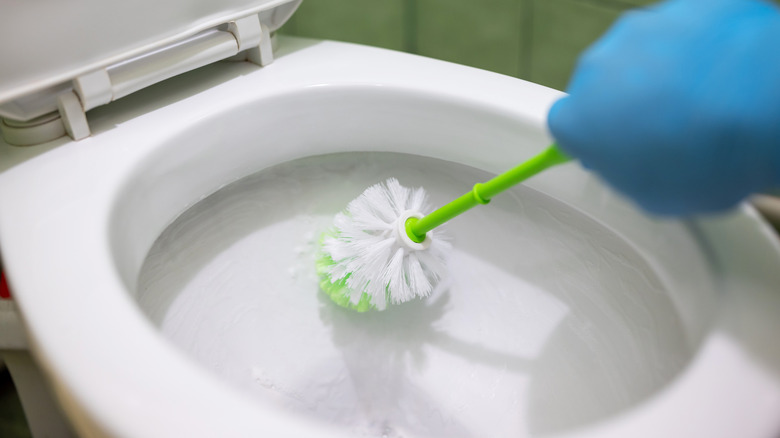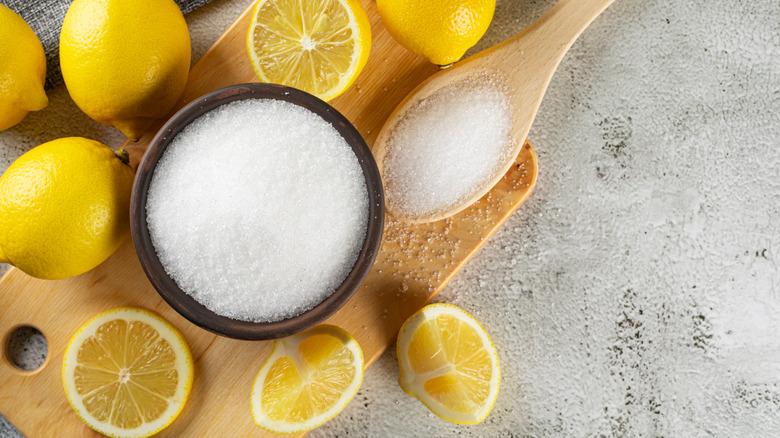The All-Natural Powdered Ingredient That Will Make Your Toilet Bowl Shine
We may receive a commission on purchases made from links.
Keeping your toilet bowl clean can feel like an uphill battle. No matter how often you scrub, some stains are more stubborn than others. If you've tried every cleaning product in the house and can't seem to banish the dreaded discolored ring of hard water stains building up in the toilet, it may be time to break out the naturally-occurring powdered ingredient that can be your secret weapon against stains: citric acid.
As the name suggests, citric acid originally comes from the juice of citrus fruits like lemons and limes. It's also a common ingredient in cleaning agents, though the citric acid found in these products is a manufactured form that's derived from a species of mold. It comes in a powdered version, like this Milliard Fine Grain Citric Acid, which can be used in the toilet bowl to get rid of limescale.
Chemically, the limescale stains in your toilet are calcium carbonate deposits that form when hard water containing calcium and magnesium evaporates. Citric acid binds to the calcium ions present in a process called chelation, breaking down the stains at a molecular level so all you have to do is rinse them away. Thanks to citric acid, you can clean via chemical reaction without harsh chemical agents.
How to clean your toilet with citric acid
How it works may sound like a science experiment, but using citric acid to clean your toilet is a simple process. It starts in the kitchen — you'll need hot (not boiling) water for this, so heat up a kettle of water carefully since boiling water can crack your toilet's porcelain. Pour the full kettle of water into the toilet bowl. As the heat starts loosening the stains, grab your citric acid and some rubber gloves; though citric acid is biodegradable and safe for your pipes, it can irritate skin, so use protection while handling it.
Once the water has cooled a tiny bit, add around a half cup of citric acid to the toilet, spreading the powder around as much of the surface of the bowl as possible. It might start to fizz — don't worry, that just means it's working! A lack of fizz doesn't mean it isn't working, just that the reaction may be happening more slowly. Regardless, the chemical reaction needs time to work, so let it sit for at least 30 minutes, or as long as overnight.
After time is up, you should be able to flush, then use a toilet brush to scrub away stains as usual. Stubborn stains may require an extra round, but you can also scrub a little citric acid directly onto the bowl for touch-ups between deep cleanings. Just note, it's important to never mix citric acid and bleach, since this can create a toxic gas.

